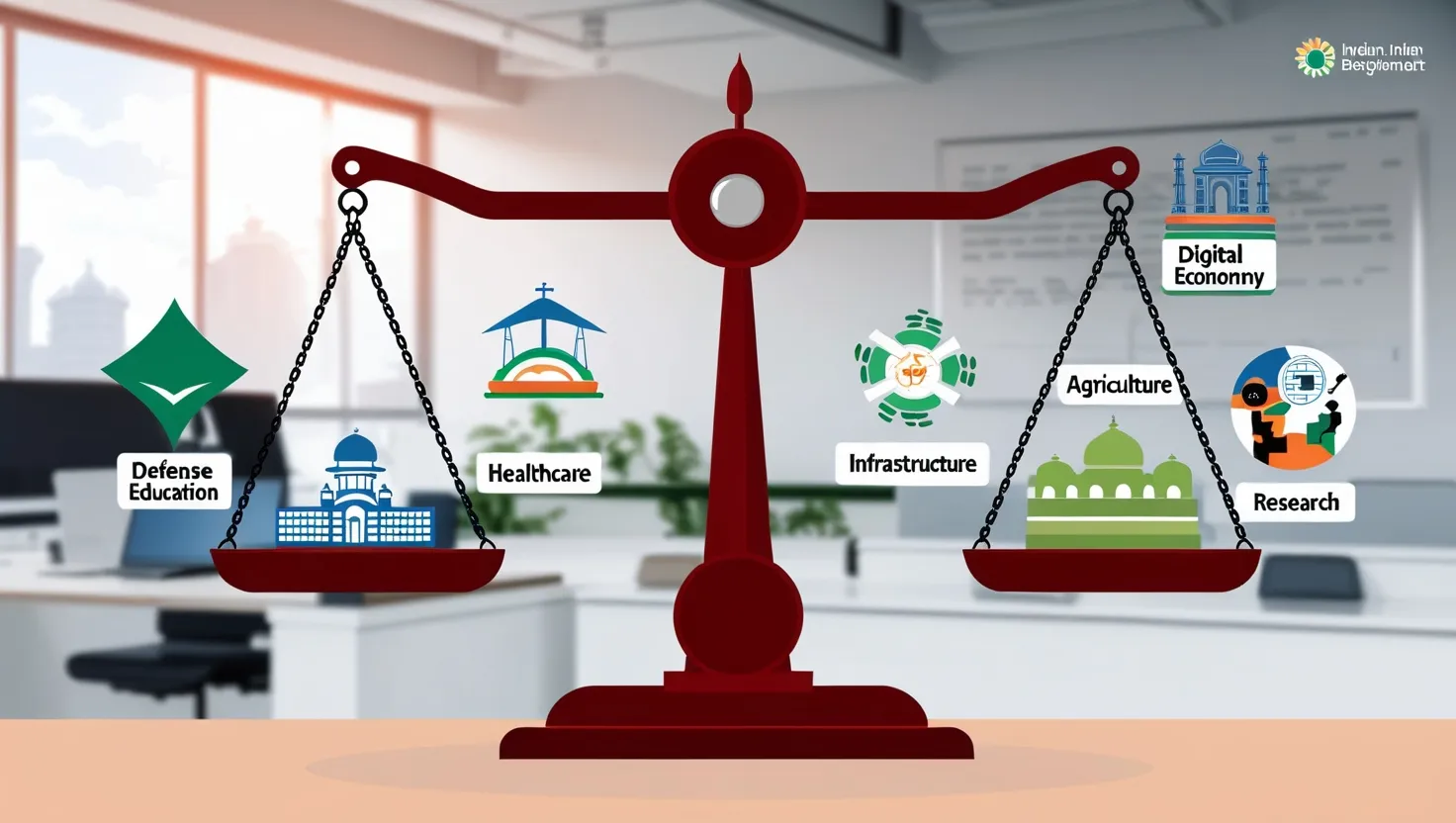India’s budget allocations are an intricate reflection of its developmental priorities, economic ambitions, and sociopolitical commitments. Every rupee assigned or withheld tells a story of compromise, strategy, and foresight, impacting the future of a nation poised to be a global powerhouse. As I dig into the allocations that shape India’s aspirations, let’s think about this: how often do we link a headline-grabbing budget number to its tangible impact on our lives? It’s time to draw that connection.
Take defense spending, for instance. With an unpredictable geopolitical environment, defense modernization tends to claim a lion’s share of the budget. The investment often goes beyond weapon procurement, focusing on indigenization of production, enhancing research capabilities, and promoting private sector participation. But does this spending always translate into absolute security? Critics often argue that with limited resources, diluting funds across long-term and immediate defense needs might strain outcomes. Yet, these investments are pivotal in securing India’s borders and crafting its global defense footprint—a web of challenges and opportunities in itself.
Moving to the social sector, the allocations for healthcare and education are a contentious mix of adequacy and misdirection. Many conversations around these sectors focus on numbers, but the story lies deeper. A significant chunk of healthcare spending often caters to infrastructural upgrades—new hospitals, critical care units, and vaccination programs. Yet, the skewed rural-urban distribution and an overwhelmed public healthcare system leave many questions unanswered. And education? India’s demographic dividend depends on transforming its population into an educated, employable workforce. Yet, the perennial dilemma of balancing quantity (more schools) with quality (better teaching resources) often complicates outcomes. What’s the cost of prioritizing one over the other?
Infrastructure investments form the backbone of any development-focused budget. Roads, railways, energy grids—these are not just the physical pathways for development but also the enablers of economic dynamism. I often wonder: does every new highway we celebrate mean fewer investments in digital infrastructure? After all, India’s vision for an economy driven by technology needs fiber-optic highways as much as its physical ones. Still, the multiplier effect of infrastructure investment—jobs, industrial growth, and better connectivity—is hard to ignore. But have you ever paused to ponder whether the pace of such investments matches the growing needs of a billion-plus citizens?
Then there’s agriculture—so vital for millions but often trapped in the rhetoric of subsidies and loan waivers. The funding for rural development and agrarian reforms frequently sparks debate. Subsidies support farmers in the short term, but do they address systemic inefficiencies? Imagine a shift where more funds were allocated to crop diversification, water-use efficiency, or agri-tech development. Wouldn’t that be a more sustainable way to transform rural economies? Yet, the political sensitivity of farm economics often overrides long-term considerations, leaving this critical sector oscillating between support and reform.
The rise of the digital economy has undoubtedly been a game-changer. Initiatives promoting digital infrastructure, cybersecurity, and technology penetration are no longer optional—they are essential. India’s ambitions to be a global tech hub rest heavily on these allocations. But here’s a thought: as we chase the dream of a digital India, are we inadvertently sidelining sections of the population who remain digitally illiterate? The digital divide is not just about access but also about skills, usage, and trust. It’s not just about investing in tech but ensuring its equitable reach.
Research and innovation often fail to grab public imagination despite their critical importance. The allocations to support cutting-edge research, foster start-ups, and encourage private-sector innovation represent bets on the future. But how does a nation balance the immediacy of developmental challenges with the uncertainty of returns on innovation? That’s a puzzle policymakers grapple with annually. Every rupee spent on a new scientific mission is a rupee not spent on present-day healthcare or infrastructure—trade-offs that define economic planning.
Finally, the mechanism of state transfers and regional funding reflects the essence of cooperative federalism. By addressing regional imbalances, these allocations aim to create a cohesive national growth story. But do the funds always reach the intended beneficiaries? Corruption, inefficiencies, and political influences often dilute the impact of these well-intentioned schemes. Should there be stricter accountability mechanisms tied to such transfers? It’s a question worth pondering.
“Budget is not merely an accounting exercise. It is an expression of our values and aspirations,” said U.S. President Barack Obama. This sentiment resonates deeply with India’s budget priorities. Each allocation shines a light on what the government considers urgent and important, pointing to trade-offs between welfare and development, growth and equity, and ambition and realism.
Yet, amidst all these numbers,






